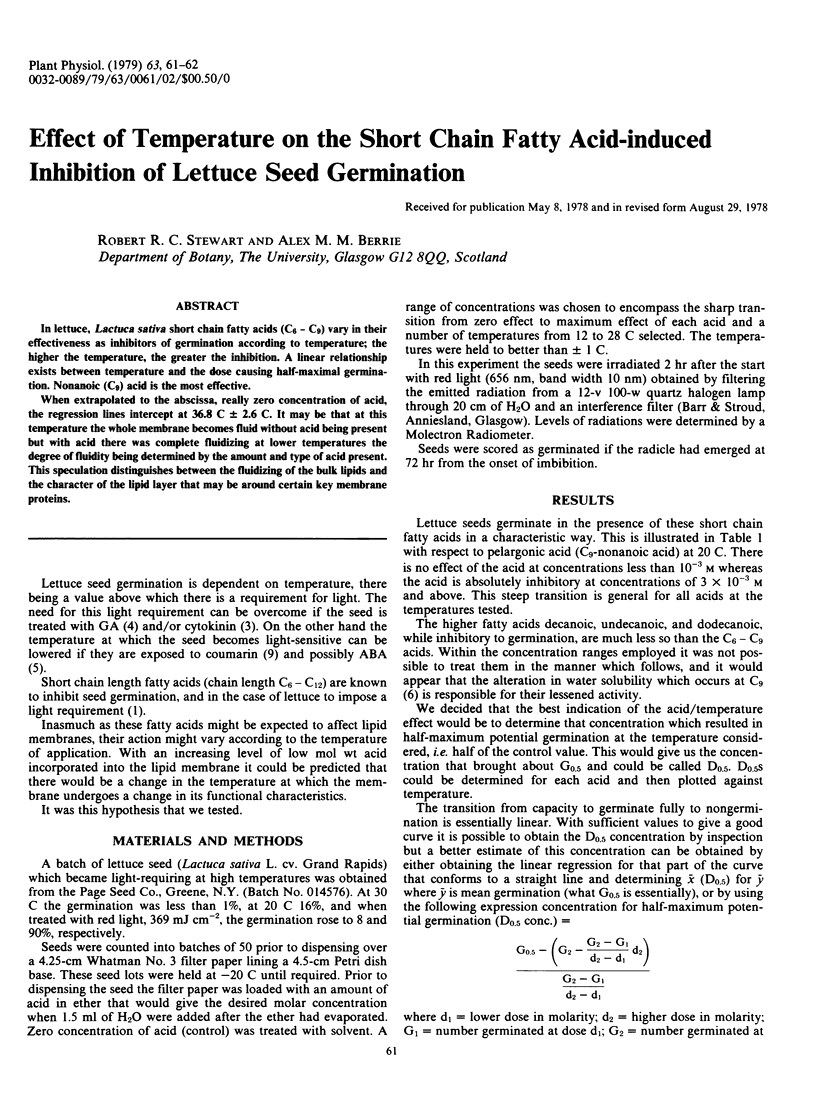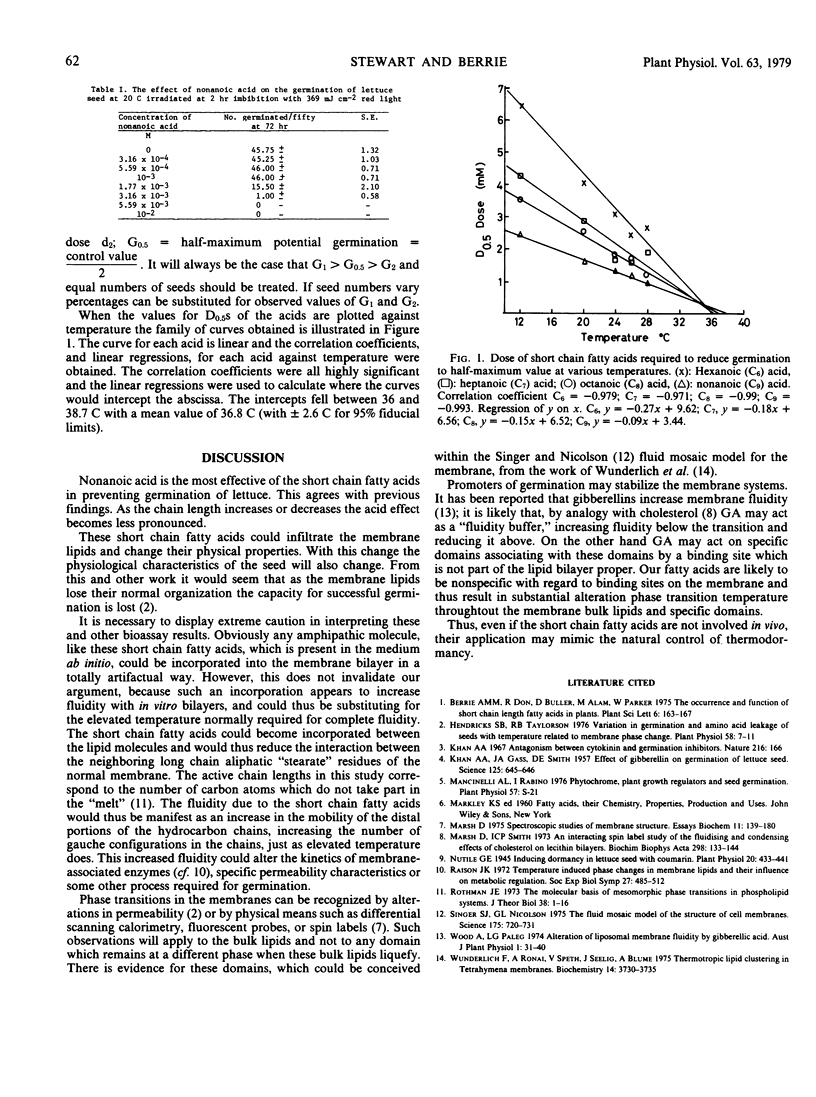Abstract
In lettuce, Lactuca sativa short chain fatty acids (C6 - C9) vary in their effectiveness as inhibitors of germination according to temperature; the higher the temperature, the greater the inhibition. A linear relationship exists between temperature and the dose causing half-maximal germination. Nonanoic (C9) acid is the most effective.
When extrapolated to the abscissa, really zero concentration of acid, the regression lines intercept at 36.8 C ± 2.6 C. It may be that at this temperature the whole membrane becomes fluid without acid being present but with acid there was complete fluidizing at lower temperatures the degree of fluidity being determined by the amount and type of acid present. This speculation distinguishes between the fluidizing of the bulk lipids and the character of the lipid layer that may be around certain key membrane proteins.
Full text
PDF

Selected References
These references are in PubMed. This may not be the complete list of references from this article.
- Hendricks S. B., Taylorson R. B. Variation in germination and amino Acid leakage of seeds with temperature related to membrane phase change. Plant Physiol. 1976 Jul;58(1):7–11. doi: 10.1104/pp.58.1.7. [DOI] [PMC free article] [PubMed] [Google Scholar]
- Jackson A. O., Larkins B. A. Influence of Ionic Strength, pH, and Chelation of Divalent Metals on Isolation of Polyribosomes from Tobacco Leaves. Plant Physiol. 1976 Jan;57(1):5–10. doi: 10.1104/pp.57.1.5. [DOI] [PMC free article] [PubMed] [Google Scholar]
- Marsh D., Smith I. C. An interacting spin label study of the fluidizing and condensing effects of cholesterol on lecithin bilayers. Biochim Biophys Acta. 1973 Mar 16;298(2):133–144. doi: 10.1016/0005-2736(73)90345-3. [DOI] [PubMed] [Google Scholar]
- Marsh D. Spectroscopic studies of membrane structure. Essays Biochem. 1975;11:139–180. [PubMed] [Google Scholar]
- Nutile G. E. INDUCING DORMANCY IN LETTUCE SEED WITH COUMARIN. Plant Physiol. 1945 Jul;20(3):433–442. doi: 10.1104/pp.20.3.433. [DOI] [PMC free article] [PubMed] [Google Scholar]
- Raison J. K. Temperature-induced phase changes in membrane lipids and their influence on metabolic regulation. Symp Soc Exp Biol. 1973;27:485–512. [PubMed] [Google Scholar]
- Rothman J. E. The molecular basis of mesomorphic phase transitions in phospholipid systems. J Theor Biol. 1973 Jan;38(1):1–16. doi: 10.1016/0022-5193(73)90221-x. [DOI] [PubMed] [Google Scholar]
- Singer S. J., Nicolson G. L. The fluid mosaic model of the structure of cell membranes. Science. 1972 Feb 18;175(4023):720–731. doi: 10.1126/science.175.4023.720. [DOI] [PubMed] [Google Scholar]
- Wunderlich F., Ronai A., Speth V., Seelig J., Blume A. Thermotropic lipid clustering in tetrahymena membranes. Biochemistry. 1975 Aug 26;14(17):3730–3735. doi: 10.1021/bi00688a002. [DOI] [PubMed] [Google Scholar]


